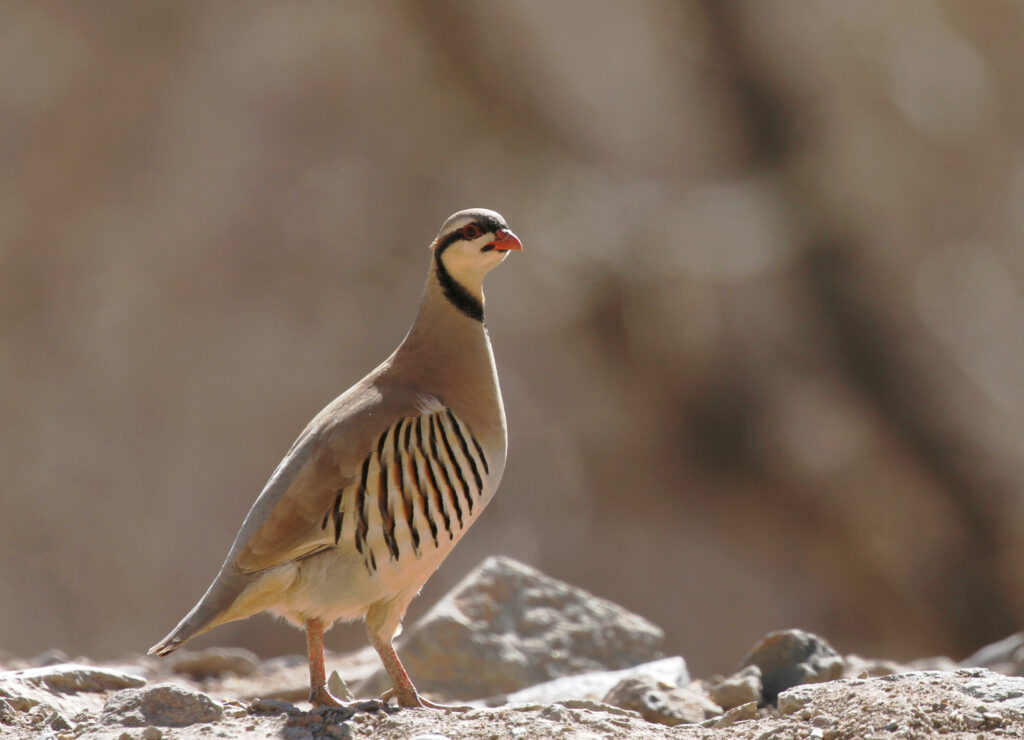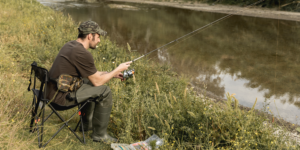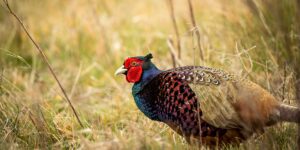This upland bird offers hunters a challenging hunt across the west for those brave enough to pursue them.
The western game bird known as chukar partridge, or simply chukar, is an iconic species for upland bird hunters. This upland bird species lives in high desert environments in the western half of the U.S. and is often nicknamed “red-legged devils.” Why, you may ask? Chukar call steep, dry mountainous terrain home and scamper up rocky outcroppings with ease, leading hunters on uphill chases across dangerous terrain for their quarry.
Chukar partridge are a medium sized upland bird with gray plumage across its back with distinctive dark lines along its sides. Chukar have a round head with a black stripe and red beak, while their feet are also red—thus the “red-legged devil.”
Why limit yourself to public land when there are millions of acres of private land to explore.
Best Habitat for Chukar Hunting
Chukar are desert dwellers, meaning they live in dry, arid environments. Water is an important resource for survival for the birds, so chukar hunters will often find birds near water such as springs, guzzlers, and rivers.
A desert mountain bird, chukar are found above 4,000 feet on steep, rocky hillsides. Chukar hunters should seek out rock croppings, and hillsides with tall grasses and shrubs. Chukar partridge eat the leaves and seeds of cheatgrass and other perennial grasses. In the fall and winter, the best chukar hunting will be found where hunters find green grass leaves that the birds fill their crops with.
Chukar habitat is typically steep and dangerous, giving a chukar hunter a challenging hunt for a chance at a covey. The birds tend to run upward when they feel pressure, and will flush downward, often leaving hunters swinging on the fast flying fowl at odd angles, making shots difficult.
In late winter when snow is heavy, chukar country can also be agriculture fields or lower elevation hillsides for food.
Best States for Chukar Hunting
Want to hunt chukar? Head west! The upland birds can be found across Utah, Nevada, Idaho, eastern Oregon, and throughout western California, and Washington. They can also be found sparsely in Arizona and Hawaii.
Each of these states boasts high desert terrain and dry, rocky slopes that chukar call home. If you’re lucky, other upland bird species can be found in these states as well, making it doubly worth your effort.

Chukar Hunting Strategies
Upland bird hunting is a sport that requires putting miles on the boots—but chukar hunting is in it’s own category. The birds inhabit terrain that requires technical hiking—terrain that isn’t for the faint of heart.
Standard chukar hunting procedure is to locate the rockiest, steepest hillside you can find and start hiking…up. To locate birds, first find springs or other water sources that are near terrain covered in cheatgrass or sage brush interspersed with rock outcroppings. Chukar, sometimes nicknamed rock partridge, are foragers and spend their time on the ground tucked under vegetation or sitting atop rock outcroppings watching for danger.
A chukar dog can help tremendously to locate birds and pin them down. Chukar would rather run than fly, and will run upwards, and fast. If hunting without a dog, many chukar hunters may not even know birds are in the vicinity because of their tendency to run rather than hunker down. A covey will run away from danger until absolutely forced to flush.
Chukar hunters should focus on gaining elevation and staying high to save energy. Ascending and descending elevation can burn out legs quickly in chukar country and cut your hunt short.
Chukar Hunting Techniques and Equipment
Hunters wanting to pursue chukar need lightweight, durable equipment. Carrying an eight pound shotgun will quickly tire you out over the steep terrain in chukar habitat. Instead, choose to carry a sub-gauge shotgun such as 20-gauge that weighs in around five to size pounds for high mountain pursuits.
Since chukar are desert dwellers, temperatures when hunting the birds can be hot. Opt for lightweight clothing that easily wicks away sweat. When temperatures turn colder, choose merino wool base layers to help manage body heat even when perspiring. A lightweight, technical pant is best for hunting chukar. A 4-way stretch pant will help with movement over the rocky terrain, while a reinforced front panel on the legs will help pants hold up against sharp rock and sage brush.
Every ounce counts when hunting chukar habitat. Choose a lightweight bird vest and be sure to carry enough water for both you and your bird dog. Once you’ve climbed a mountain for chukar, you do not want to have to cut your hunt early to head back to your truck to refill your water supply.
Be sure to choose a lightweight boot with plenty of tread. Break in your boots long before you hit the hills for chukar. The steep, gnarly terrain can quickly cause blisters to form if you’re wearing your boots for the first time..
Hunters should prepare for obscure, off balance shooting when hunting for chukar. The red-legged devils run upwards to safety, but flush downward, often times leaving hunters on steep inclines when shots present themselves. Before the season opener, throw clay birds at hard angles to practice fast passing shots to mimic fast flying chukar.
Chukar Hunting Regulations and Restrictions
Wild chukar seasons generally begin in late September and run through mid-February. The start of the season can be very hot, and hunters should be careful of dangers such as rattlesnakes in the early season.
Bag limits for chukar vary depending on state, but are usually around five to six birds per day. Be sure to check your state’s regulations before heading afield.
The hassle free way to monetize your acreage.
Where to go Chukar Hunting: Public vs. Private Land
Wild chukar are a popular game bird to pursue on both public and private land in the West. Millions of acres are open to hunting wild chukar coveys, and by putting boots to the ground, hunters will find birds.
Public Land
Hunters looking to pursue chukar have plenty of free opportunities with the millions of acres of BLM land across the West. Because sportsmen can hunt public land for free, coveys can be highly pressured. This means that hunters will have to hike far and wide to find birds, and may not find a covey every time they go afield. Pressure from public hunting can make birds be weary and flush wild when they sense danger—meaning birds shots can be at longer distances, or hunters have to work extra hard to find non-pressured birds that will flush within shotgun range.
Private Land
Ranchlands across the West are ideal habitat for chukar because of the easy access to food and water. Private land hunters have opportunities at unpressured birds, meaning they may find more coveys than a public land hunter because the birds are protected from multiple hunters a day.
Large swaths of private lands in the west are often used for grazing or are untillable, meaning they are ideal, untouched land that holds birds. A simple knock on a door to ask permission may gain you bird hunting rights to hundreds of acres of untouched chukar habitat. Be a good steward of the land and respect the property to gain rights to hunt there again.
Click on one of the map pins below to learn more about the properties.
Chukar Hunting FAQ
The chukar is a unique bird and a bucket list species for some upland hunters. Finding chukar can be difficult, and bagging one is even more challenging, but they offer a hunt of a lifetime.
Are Chukars hard to shoot?
Chukar are fast flying mountain birds, and because of their habitat, shots can be tricky. Hunters often find themselves hiking steep terrain, and coveys flush downward, meaning shooters have to fire at odd angles and hard passing shots.
What does a chukar taste like?
The breast meat of a chukar is a white and mild tasting, and makes for delicious table fare. Hunters can expect a tender breast when prepared correctly, whether that be smoked, baked, fried or pan-reared. The legs of the birds are a darker meat because of their athleticism. Slow-cook chukar legs to tenderize the meat.
What size shot is best for chukar hunting?
Chukar are a medium sized upland bird and an adult chukar can weigh between 1 to 1.5 pounds. Hunters will often hunt with #5 or #6 shot, in a 2 ¾-inch or 3-inch shell. A 20-gauge or 16-gauge shotgun is recommended to cut down on weight when trekking up chukar habitat.



